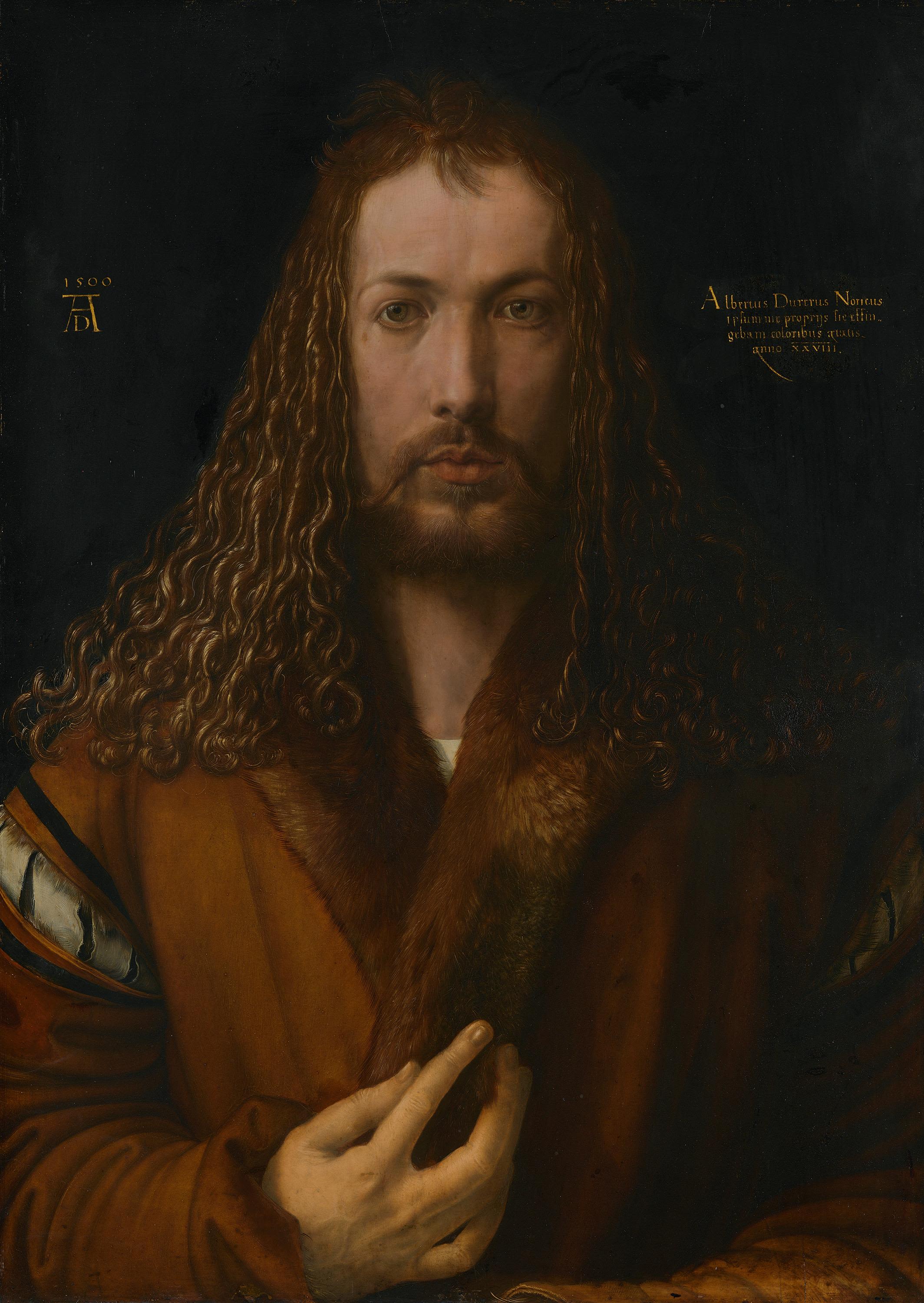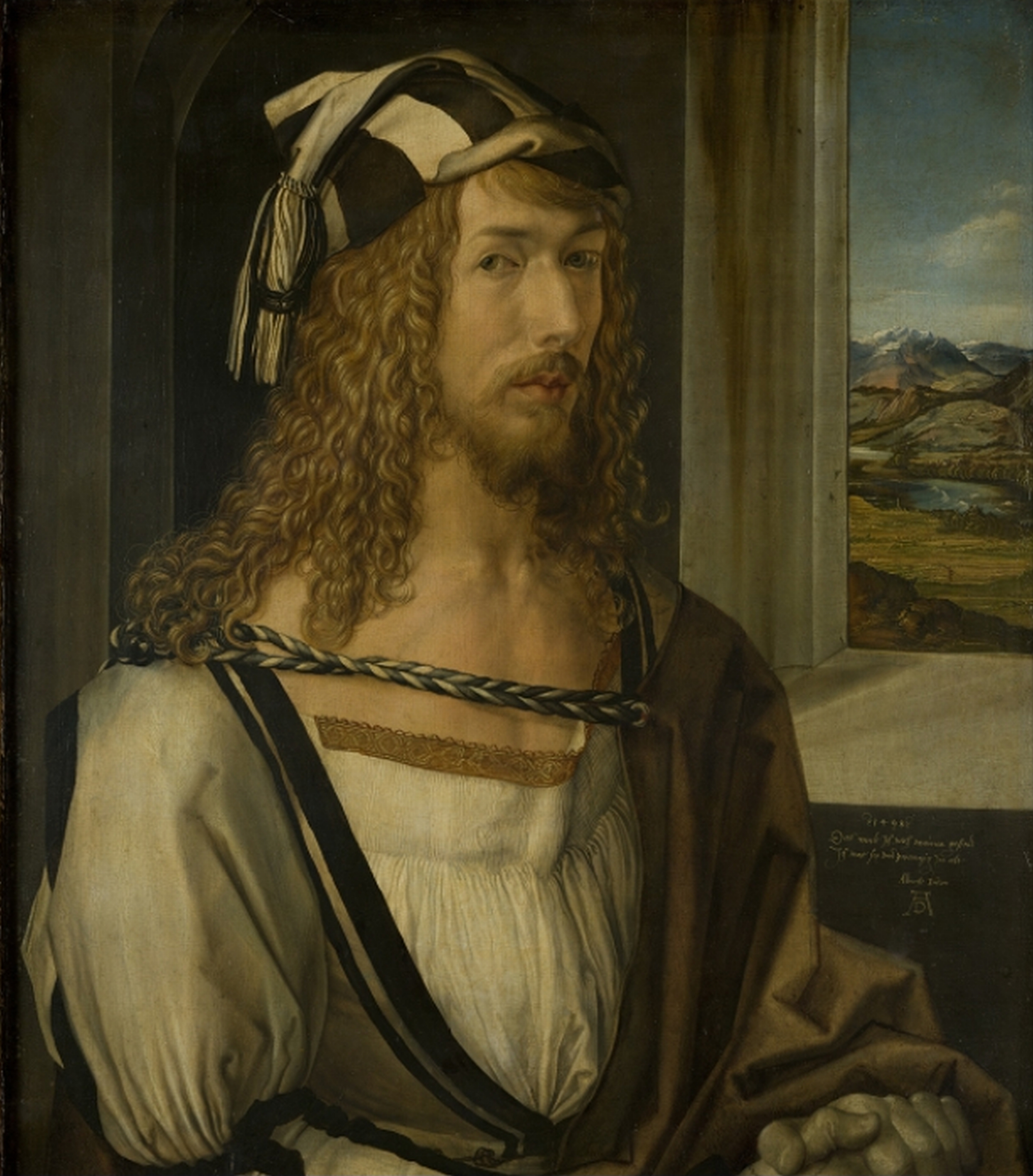Time for our new partnership! For the next four Sundays we will present the magnificent collection of the Bayerische Staatsgemäldesammlungen - Alte Pinakothek in Munich. Check it out on our social media accounts (follow them here: Facebook, Twitter, and Instagram). We start with an absolute art history classic. Enjoy! :)
The self-portrait by the Nuremberg painter Albrecht Dürer from 1500 is not only one of the most famous works in the Alte Pinakothek, but in the entire history of Western art. The life-size work of art marks a turning point at the end of the Middle Ages.
As modern as the work is in its confidently presented individuality, it still recalls the strong Christian influences prevalent in the Middle Ages. The frontal depiction quotes representations of the Salvator Mundi (Jesus Christ, Redeemer of the World). Dürer's artistic work can also be linked to the Christian theme, for drawing, graphics, or painting are able to create a world, even to "create" it anew. The Latin inscription on the right side of the picture reads in translation: "Thus I, Albrecht Dürer from Nuremberg, painted myself with imperishable colors at the age of 28." This is already his third self-portrait, but the first to break so radically with the traditions of painting.
The shoulder-length hair can be understood as an intended analogy to the figure of Christ. It is customary to show him as a young man with a center parting and a neck-length hairstyle. Dürer thus adapts a sacred motif and shows himself with a certain likeness to Christ. The immaculate and idealized appearance, as well as the noble clothing, correspond to this.
The painter positions his hand centrally in the portrait. It reaches into the fur of the marten, which, according to the dress code of the time, was reserved for the highest classes and was actually forbidden to him as an artist working with his hands. So, this gesture can be understood as an expression of his intent to rise up the ranks.
Albrecht Dürer used his famous monogram on his works for trademark protection: A for Albrecht and D for Dürer. In this way he marked his authorship and documented his high standards. At the time of Dürer, artists were still organized in guilds and their status was similar to that of craftsmen. The modern artist, who was new by the standards of the time, was to be regarded as ingenious and inventive. A self-portrait bears witness to this process of discovery like no other work by artists of the time.
During Dürer's lifetime, the picture probably hung in his house in Nuremberg, was later moved to the city's town hall, and was sold to Munich in 1805. From the private sphere, the painting found its way into the city's representation room and then into the royal collection of paintings. In this way, it transforms from an individual portrait to the city's pride in the "son of the city" and finally to a classic in art history.
P.S. Here you will find a list of most iconic self-portraits in European art that everyone should know! Dürer is also there :)
P.P.S. Check out the reproductions of other Renaissance masterpieces on our DailyArt Prints.


 Albrecht Dürer
Albrecht Dürer